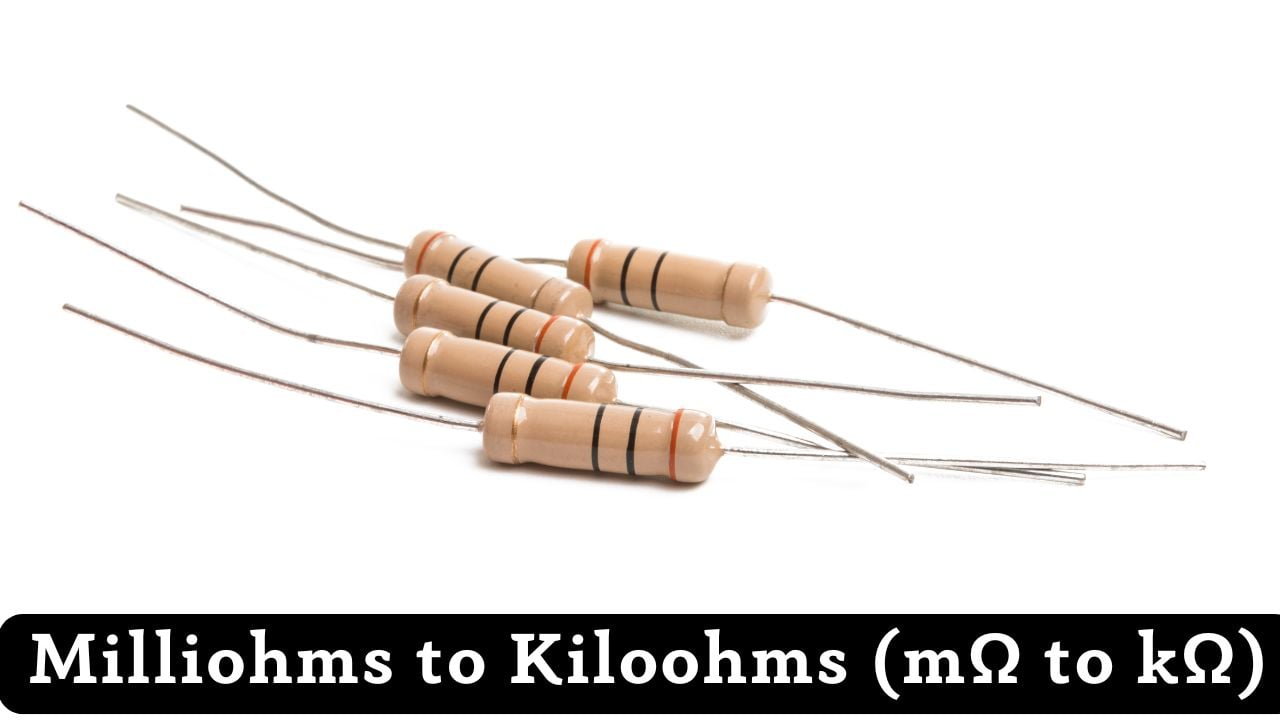Milliohm to Kiloohm Converter
Convert milliohms to kiloohms.

Table of Contents
Milliohm (mΩ) to Kiloohm (kΩ) Conversion
To convert milliohms to kiloohms, divide by 1,000,000 (since 1 kΩ = 1,000,000 mΩ):
Conversion Formula
kΩ = mΩ / 1,000,000Where:
- kΩ = Kiloohms
- mΩ = Milliohms
Example
If you have a resistance of 5000000 mΩ, the calculation would be:
kΩ = 5000000 mΩ / 1,000,000 = 5 kΩMilliohm (mΩ)
A milliohm (mΩ) is a unit of electrical resistance equal to one-thousandth of an ohm (0.001 Ω). It is commonly used in precision measurements.
What is a Kiloohm (kΩ)?
A kiloohm (kΩ) is a unit of electrical resistance equal to 1,000 ohms. It is commonly used in electronics to describe the resistance of components.
Milliohms to Kiloohms (mΩ to kΩ) Conversion Table
Formula: kΩ = mΩ × 0.000001
| Milliohms [mΩ] | Kiloohms [kΩ] |
|---|---|
| 1 mΩ | 0.000001 kΩ |
| 5 mΩ | 0.000005 kΩ |
| 10 mΩ | 0.000010 kΩ |
| 20 mΩ | 0.000020 kΩ |
| 50 mΩ | 0.000050 kΩ |
| 100 mΩ | 0.000100 kΩ |
